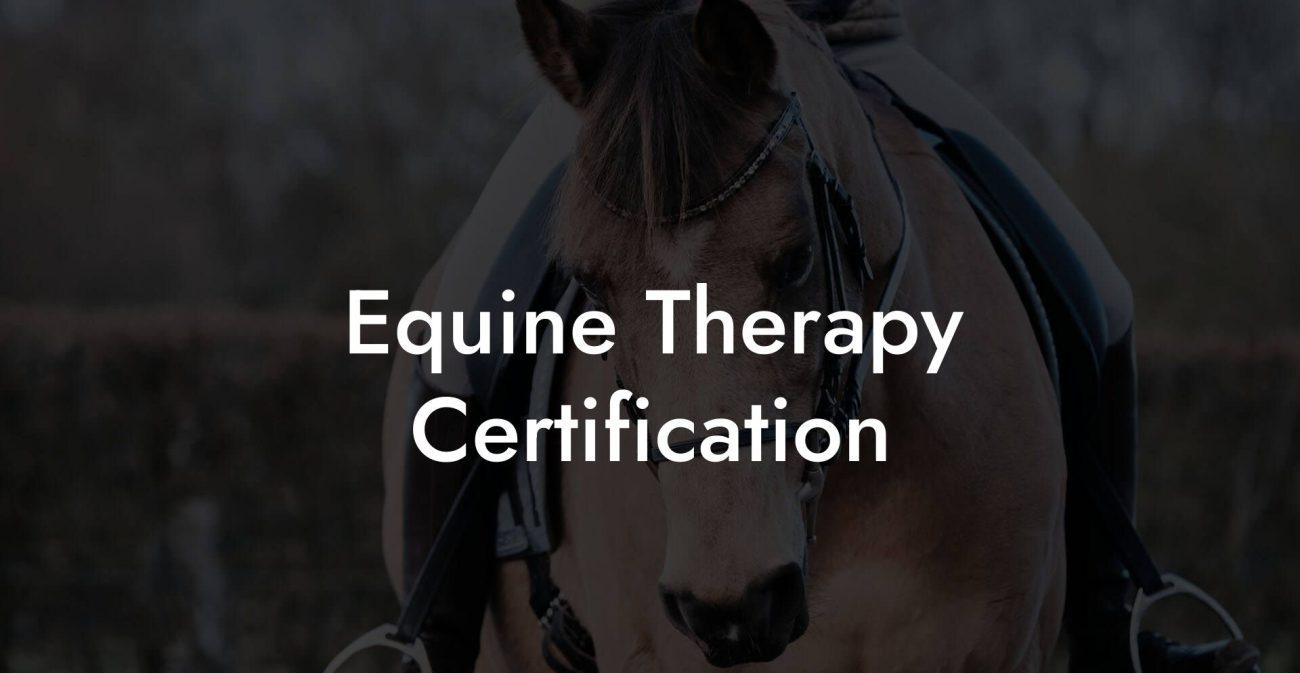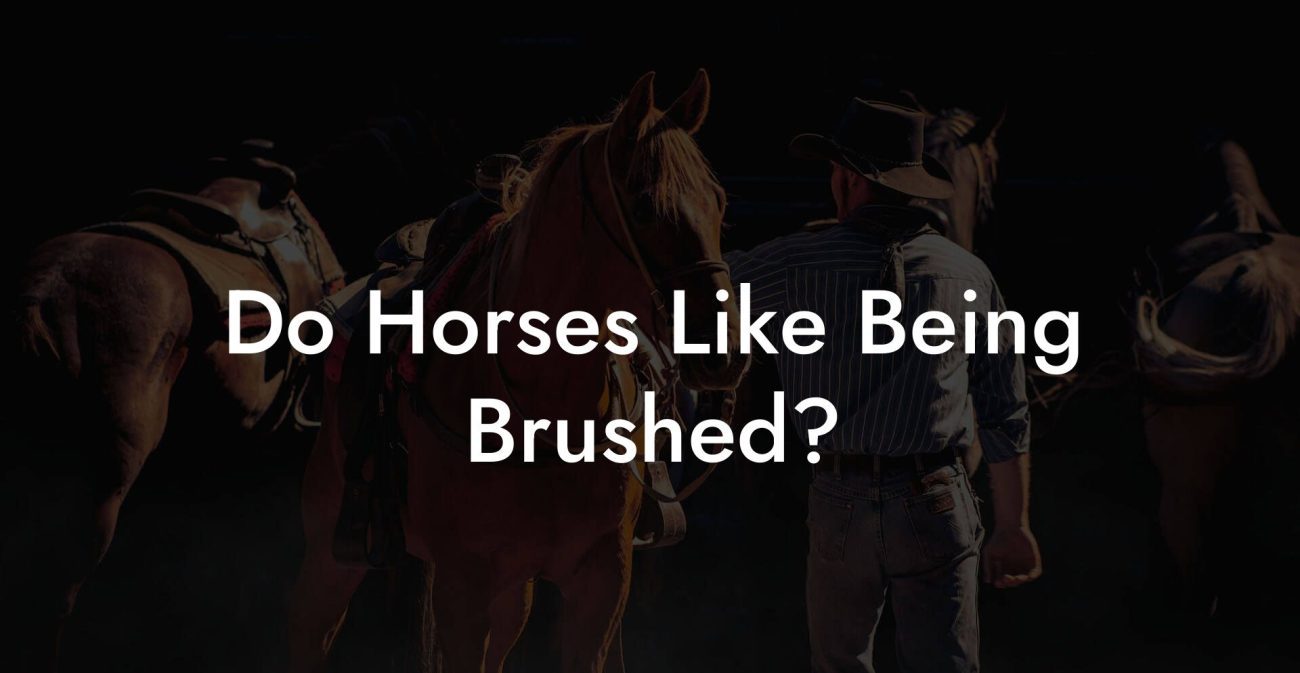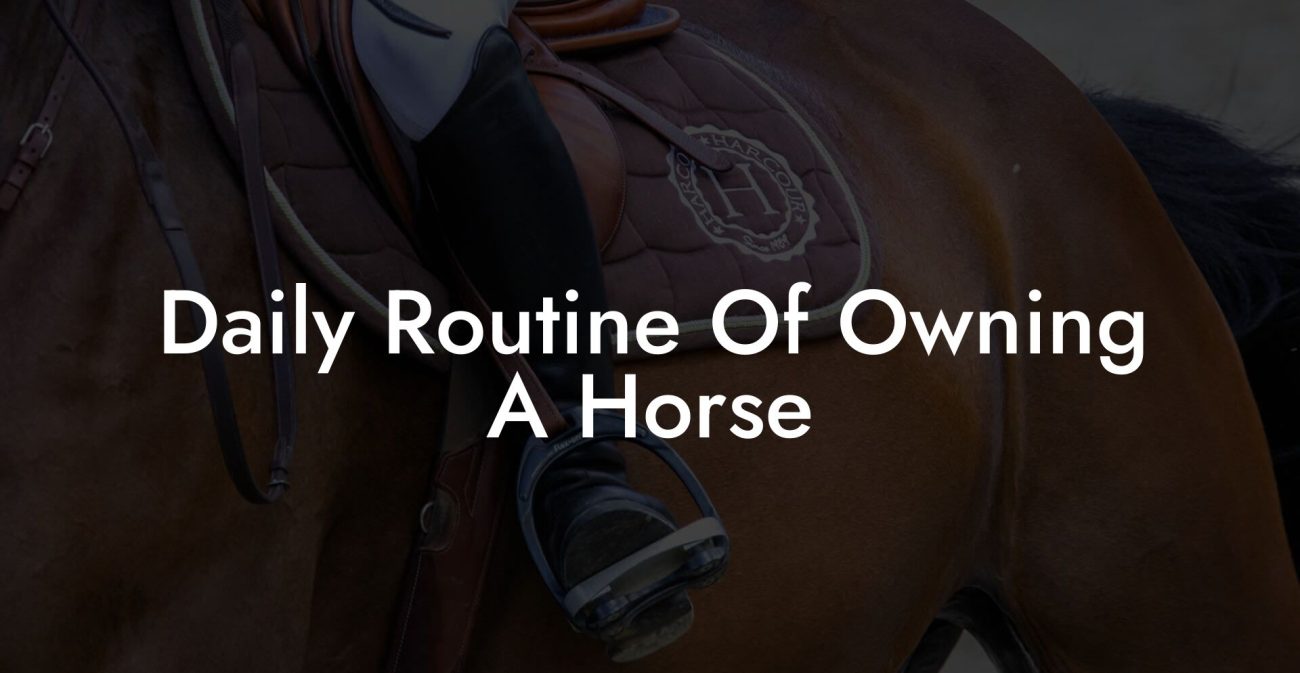Ever found yourself in a moment where your majestic horse is more a four-legged bundle of anxiety than the graceful steed you envisioned, and you wonder, “How do I get horse tranquilizer?” Before you hit refresh on your Google search, let’s dive into a down-to-earth exploration that’s both informative and refreshingly real. Whether you’re a new Gen-Z equestrian or a seasoned millennial rider, we’re here to guide you through the ins and outs of horse tranquilizers, the safe, legal, and downright necessary aspects of these potent veterinary tools.
Quick Links to Useful Sections
- Understanding Horse Tranquilizers: What Are They and Why Do They Matter?
- When and Why to Consider a Horse Tranquilizer
- The Legal and Ethical Side of the Equation
- Exploring the Most Common Types of Horse Tranquilizers
- Acepromazine
- Xylazine
- Detomidine
- How to Legally and Safely Obtain a Horse Tranquilizer
- Step 1: Recognize the Need for Tranquilization
- Step 2: Schedule a Consultation with a Licensed Veterinarian
- Step 3: Follow the Prescription Precisely
- Step 4: Monitor Your Horse’s Response
- Step 5: Maintain Detailed Records
- Dosage, Administration, and Safety Guidelines
- Integrative Alternatives: Beyond Conventional Tranquilizers
- Case Studies: Real-Life Experiences with Equine Tranquilizers
- Case Study 1: Calming a Skittish Show Horse
- Case Study 2: Easing Transport Stress for a Senior Horse
- Case Study 3: Navigating a Veterinary Procedure
- Resources and Community Support: Your Next Steps
- FAQs: Your Questions About Horse Tranquilizers Answered
- The Road Ahead: Embrace Safe, Responsible Equine Care
Understanding Horse Tranquilizers: What Are They and Why Do They Matter?
Horse tranquilizers, sometimes known as equine sedatives, are specialized medications used to calm horses, ease pain, or facilitate certain procedures. Contrary to what some might think from the flashy headlines, these aren’t recreational substances or ‘party drugs’ for horses; they are powerful sedatives that must be used responsibly under professional supervision.
In the world of veterinary medicine, tranquilizers like acepromazine, xylazine, and detomidine serve specific purposes. They help manage stress during transportation, calm a skittish horse before a veterinary procedure, or even help in cases where a horse’s behavior might endanger itself or its handler. For the modern equestrian who cares passionately about their animal’s well-being, it’s critical to know that these drugs are not “get it online and use it at home” magic potions. Instead, they are highly regulated tools that require a proper prescription and professional oversight.
With a mix of humor, honesty, and a sprinkle of millennial wit, let’s navigate the complex terrain of horse tranquilizers, a topic that’s as intricate as the mane on your favorite thoroughbred.
When and Why to Consider a Horse Tranquilizer
As any horse owner will tell you, our equine friends have moods, personalities, and sometimes, a surprising knack for creating chaos. But before you start dreaming of a pill that instantly transforms your jittery pony into a chill, zen master, it’s important to understand the real scenarios when a tranquilizer might be necessary.
Managing Anxiety and Stress: Horses are naturally prey animals, which means they can be highly sensitive to sudden changes, loud noises, or unfamiliar environments. In stressful situations, a veterinarian might recommend a sedative to help calm your horse’s nerves. For example, long journeys, veterinary procedures, or even particularly boisterous events can trigger anxiety, and a short-term sedative may be just what’s needed to keep everyone safe.
Temporary Relief for health-Related Procedures: Sometimes, gentle sedation is crucial during diagnostics or minor surgical procedures. A calm horse is easier to handle, reducing the risk of injury to both the animal and the caretaker. This kind of sedation ensures that diagnostic tests or minor treatments can be performed without unnecessary distress.
Behavioral Modifications: In very specific and often critical cases, tranquilizers might be utilized as part of a broader behavioral management plan, always as a complement to training and environmental changes rather than a standalone solution.
It’s essential to emphasize that horse tranquilizers should never be considered a go-to for routine behavior problems (like that stubborn refusal to load into trailers). Instead, preventive care, proper training, and a supportive environment are the first lines of defense when it comes to managing a horse’s mood.
The Legal and Ethical Side of the Equation
Let’s be real: in today’s world, obtaining any type of controlled substance is a serious matter, and horse tranquilizers are no exception. The laws regulating these medications are as robust as your horse’s well-toned hindquarters, and for good reason.
The use and distribution of horse tranquilizers are strictly regulated by veterinary boards and governmental agencies, which means any attempt to acquire them without the proper prescription is not only illegal but could also endanger the life of your beloved animal. The guidelines aren’t just red tape; they’re in place to ensure that these powerful drugs are used safely and effectively.
If you’re wondering how to get horse tranquilizer, the answer is both simple and complex: the only legal and safe way to acquire these medications is by consulting with a licensed veterinarian. They will assess your horse’s condition, determine if a tranquilizer is appropriate, and provide a prescription that adheres to all regulatory requirements.
Trusting a professional means you’re not only looking out for the legalities, you’re also ensuring that the right dosage, frequency, and method of administration are used. This isn’t just a mundane bureaucracy; it’s a critical safety network designed to protect your horse and the person caring for it.
Exploring the Most Common Types of Horse Tranquilizers
The world of horse tranquilizers isn’t a one-size-fits-all scenario, different medications serve different purposes. Here, we’ll explore some of the most widely used tranquilizers and what makes each of them unique.
Acepromazine
Often considered the classic equine tranquilizer, acepromazine is frequently used to provide mild sedation and reduce anxiety. It works by depressing the central nervous system, leading to a relaxed state. However, its effects are modest compared to other agents, and it’s usually reserved for lighter sedation tasks.
Xylazine
Xylazine is a more potent sedative, offering both sedation and analgesia. This means it not only calms your horse but also helps alleviate pain, a dual benefit in many stressful or painful scenarios. Due to its potency, xylazine is often used in more intensive situations, such as advanced diagnostic procedures or minor surgical interventions.
Detomidine
Detomidine is similar to xylazine but is known for its longer duration of action. It’s particularly beneficial for procedures that require extended periods of calm and stillness. Its slower onset, however, means that timing and dosage must be carefully managed to synchronize with the care or procedure planned.
Each of these tranquilizers serves a specific niche in equine care, and the choice between them depends on factors like the horse’s health, the situation at hand, and the desired duration and intensity of sedation. The key takeaway? These medications are professional tools, not something to be experimented with at home.
How to Legally and Safely Obtain a Horse Tranquilizer
When it comes to sedating your horse, the golden rule is clear: always involve a veterinarian. Here’s a step-by-step guide to ensure that you’re on the right side of the law, and more importantly, on the right side of your horse’s health.
Step 1: Recognize the Need for Tranquilization
Not every stressful situation or difficult behavior calls for a chemical intervention. Instead, consider whether your horse might benefit from a non-pharmacological approach, such as behavioral training, environmental adjustments, or natural calming supplements. Tranquilizers should be seen as a last resort or a component of a comprehensive treatment plan.
Step 2: Schedule a Consultation with a Licensed Veterinarian
Once you’ve determined that sedation may be necessary, contact a trusted veterinarian. During your consultation, be prepared to discuss your horse’s behavior, recent stressors, medical history, and any previous treatments. The vet’s evaluation will help determine not only if a tranquilizer is needed but also which type, and at what dosage.
Step 3: Follow the Prescription Precisely
If your veterinarian prescribes a tranquilizer, follow their instructions to the letter. This includes dosage, timing, and administration methods. Overdosing or improper administration can have serious, even life-threatening, consequences for your horse.
Step 4: Monitor Your Horse’s Response
After administration, keep a close eye on your horse’s behavior, vital signs, and overall responsiveness. Any adverse reactions should be reported to your vet immediately. In many cases, the sedative’s effects may warrant ongoing observation by a professional, especially during the case of prolonged procedures.
Step 5: Maintain Detailed Records
It’s not only good practice but often a legal requirement to maintain records detailing the use of any controlled substance. Document the prescription details, the administration process, your horse’s reaction, and any follow-up treatments. This transparency can be crucial for future medical assessments and in case any concerns arise.
By following these steps, you’re ensuring that you’re acting within legal boundaries while prioritizing your horse’s well-being. Responsible handling and adherence to professional guidance are what truly elevate you from a casual reader to a conscientious caretaker.
Dosage, Administration, and Safety Guidelines
When it comes to horse tranquilizers, dosage and administration are where the real rubber meets the road. These medications are powerful, and getting the dosage just right isn’t a matter of “more is better” but rather “precision is key.”
Strictly Follow Vet Recommendations: Under no circumstances should you adjust the dosage on your own. Veterinary expertise is essential in determining whether your horse’s weight, age, and overall health require a gentler touch or a more potent dose.
Administration Methods: Horse tranquilizers can be administered intravenously, intramuscularly, or sometimes subcutaneously. The method chosen depends on the specific drug, the intended use, and the urgency of the situation. A vet will choose the most appropriate method to maximize the medication’s benefits while minimizing risks.
Safety and Side Effects: Like any powerful sedative, horse tranquilizers carry the risk of side effects. These may include lowered blood pressure, respiratory depression, or even paradoxical excitement in rare cases. It’s vital to have a controlled setting during administration, with the necessary medical equipment on hand to reverse the effects if needed.
Emergency Protocols: Always have an emergency plan. Know the signs of overdose or adverse reactions, such as slowed breathing, excessive sedation, or unresponsiveness, and be ready to contact your veterinarian or an emergency animal hospital immediately.
Balancing quality care with the need for sedation is an art and science that only trained professionals can execute safely. Keeping detailed records, monitoring vital signs closely, and maintaining constant communication with your vet mean the difference between a successful procedure and a potential crisis.
Integrative Alternatives: Beyond Conventional Tranquilizers
While equine tranquilizers are indispensable in certain scenarios, many modern horse owners are embracing integrative and holistic approaches to support their horse’s calm and well-being, often in tandem with professional sedation.
Herbal Supplements: Plants like chamomile, valerian root, and passionflower are often used to naturally ease anxiety in horses. These supplements are typically much gentler than pharmaceutical drugs, and while they may not be potent enough for a full-blown sedation, they can support a calming environment before, during, or after veterinary procedures.
Acupuncture and Acupressure: These ancient practices have gained popularity in modern veterinary care as adjunct therapies. By stimulating specific acupoints, acupuncture can help relieve stress and promote relaxation in horses. Many horse owners have reported improved behavior and calmer demeanors following regular sessions.
Environmental Modifications: A calming atmosphere can go a long way. Simple changes like soft lighting, soothing music, and reducing abrupt noises can help lower stress levels in your horse. Creating a stable environment free from sudden disturbances contributes significantly to your animal’s overall calmness, even reducing the need for chemical intervention.
Behavioral Training: Positive reinforcement training methods that emphasize calm behavior offer long-term benefits. Rather than relying solely on medication, you can work with professional trainers to help your horse develop coping mechanisms in stressful situations.
Integrative alternatives are not a replacement for veterinary-approved tranquilizers when they are necessary, they are a compliment. Combining modern medical protocols with holistic approaches not only supports your horse’s immediate needs but also contributes to long-term emotional balance and overall health.
Case Studies: Real-Life Experiences with Equine Tranquilizers
To bring these concepts to life, let’s explore a few real-life case studies that highlight the critical role of tranquilizers, and the supportive integrative approaches, in caring for horses.
Case Study 1: Calming a Skittish Show Horse
Bella, a talented show horse with a reputation for being temperamental, was once notorious for her pre-competition jitters. Her owner, a tech-savvy millennial trainer, noticed that Bella’s nervous energy was affecting her performance. After a consultation with a veteran equine specialist, Bella was administered a carefully calculated dose of acepromazine prior to competitions. Combined with targeted behavioral training and calming supplements, Bella’s performance improved dramatically. Her owner credited the integrated approach, not solely the medication, for turning Bella into the graceful champion she is today.
Case Study 2: Easing Transport Stress for a Senior Horse
Rocky, an elderly draft horse, often showed signs of extreme stress during transport. The obvious solution was to use a sedative to ensure his safety. After an evaluation, the veterinarian opted for a mild dose of xylazine, administered under controlled conditions. To further ease Rocky’s anxiety, his caretaker created a soothing environment in the trailer with soft music and familiar blankets. The result? A smooth journey with no signs of distress. This thoughtful, multifaceted approach not only made the transport safer but also improved Rocky’s overall disposition.
Case Study 3: Navigating a Veterinary Procedure
When Luna, a prize-winning mare, required a minor surgical procedure due to a stubborn laceration, her owner was understandably nervous. The chosen plan involved detomidine to provide extended sedation during the procedure. The veterinarian, well-versed in the nuances of equine sedation, combined the medication with biofeedback monitoring to ensure Luna’s vital signs stayed in optimal ranges. Post-procedure, her caretaker implemented integrative practices like acupuncture sessions to help Luna regain her usual calm demeanor quickly.
These case studies serve as powerful examples of how a careful, professional approach to horse tranquilizers, coupled with integrative practices, can yield positive outcomes. They underscore that it’s not merely about “getting” a tranquilizer, it’s about utilizing every tool in the veterinary arsenal to ensure safety, efficiency, and long-term well-being.
Resources and Community Support: Your Next Steps
If you’re venturing into the world of equine care and are curious about how to safely incorporate tranquilizers into your regimen, you’re not alone. The modern equestrian community is as resourceful as it is connected, boasting a wealth of information, expert advice, and supportive networks.
Connect with Your Local Veterinarian: First and foremost, build a relationship with a trusted, licensed veterinarian who specializes in equine care. Their expertise is indispensable when it comes to understanding when and how to use tranquilizers responsibly.
Join Online Forums and Social Media Groups: Platforms like Reddit, Facebook groups, and specialized equine care forums are teeming with experienced riders and horse owners who share their real-life experiences, tips, and best practices. Don’t hesitate to ask questions and share your own journey.
Attend Workshops and Seminars: Many veterinary schools and equestrian centers offer workshops on advanced equine care, including the safe use of sedatives and integrative methods to manage stress and anxiety in horses.
Explore Reputable Online Resources: Websites that specialize in veterinary science and equine health often provide articles, user guides, and research papers that offer deep insights into the latest in equine sedation and integrative care methods.
Local Equestrian Clubs and Communities: In-person interactions can be invaluable. Many local clubs host informational sessions or Q&A events where you can learn directly from experts and share your experiences with fellow enthusiasts.
The journey to mastering the use of equine tranquilizers is not a solitary one, it’s a community effort. By tapping into these resources and engaging with a network of knowledgeable peers, you’re taking proactive steps toward ensuring your horse’s emotional and physical well-being.
FAQs: Your Questions About Horse Tranquilizers Answered
We know that navigating the world of equine care, especially regarding tranquilizers, can raise tons of questions. Here are some of the most frequently asked questions, answered in a way that’s both informative and refreshingly candid.
1. Is it legal for a horse owner to obtain tranquilizers on their own?
No. Horse tranquilizers are controlled substances. The only legal way to obtain them is via a licensed veterinarian who will assess your horse’s condition and provide a prescription.
2. What are the risks associated with using a horse tranquilizer?
Like all potent medications, horse tranquilizers carry risks, including potential respiratory depression, lowered blood pressure, or unintended behavioral changes. That’s why professional oversight and precise dosing are essential.
3. How do I know if my horse needs a tranquilizer?
A tranquilizer might be necessary if your horse is experiencing severe anxiety, is undergoing a stressful procedure, or if there are clinical indications where sedation can reduce risk. Always consult your vet before proceeding.
4. What are the differences between acepromazine, xylazine, and detomidine?
Acepromazine is typically used for mild sedation, xylazine offers both sedation and pain relief, and detomidine provides longer-lasting sedation. Your veterinarian will choose the right one based on your horse’s needs and the procedure at hand.
5. Are there natural alternatives to chemical tranquilizers?
Yes, integrative approaches, including herbal supplements, environmental modifications, acupuncture, and behavioral training, can support a calm state in horses and are often used in conjunction with, or in place of, pharmaceutical tranquilizers.
6. How should I prepare my horse for a procedure that requires sedation?
Preparation includes ensuring your horse is well-hydrated, in a familiar environment, and that any pre-sedation protocols recommended by your veterinarian are meticulously followed. Providing a calm, stress-free setting can enhance safety and effectiveness.
7. What should I do if I notice adverse reactions after sedation?
Immediately contact your veterinarian and be prepared to implement the prescribed emergency protocols. Close observation in the hours following sedation is crucial for detecting any complications early.
8. Can I reuse the tranquilizer for multiple procedures?
No, tranquilizer use should be determined on a case-by-case basis. Overuse or inappropriate reuse can lead to tolerance or dangerous side effects, so each instance must be evaluated by a professional.
9. How do environmental factors affect the need for a tranquilizer?
A noisy, chaotic, or unfamiliar environment can heighten a horse’s stress levels, sometimes making sedation a safer choice during procedures. However, a calm setting is always preferable and might reduce or eliminate the need for chemical sedation.
10. Where can I learn more about holistic approaches to managing equine anxiety?
Check out reputable veterinary journals, equine health blogs, and community forums. Your veterinarian and local equine care workshops are also excellent resources for learning more about integrative and holistic approaches.
The Road Ahead: Embrace Safe, Responsible Equine Care
Stepping into the world of horse tranquilizers may sound intimidating, but remember: knowledge is your best ally. By understanding what these medications are, when to use them, and, most importantly, how to obtain and administer them safely, you’re not only protecting your horse, you’re empowering yourself as a responsible caretaker.
The journey to mastering equine sedation and integrative care involves a healthy dose of research, professional guidance, and a commitment to your horse’s overall well-being. Rather than seeking a quick fix, you’re embracing an approach that spans legal, ethical, and medical best practices.
Whether you’re managing transport anxiety or prepping for an important procedure, your horse’s health is in the hands of those who care. Around every corner lies a community of vets, trainers, and fellow equestrians who are there to support you. So, before you ever think “how to get horse tranquilizer” via a shady shortcut, remember that safe, effective sedation starts with professional advice and responsible action.
Keep building your knowledge base, ask questions, and lean into the support of your trusted veterinary professionals and online communities. With dedication, transparency, and a dash of that millennial DIY spirit (always under expert guidance), you’re well on your way to ensuring a calm, healthy environment for your horse.
Your proactive approach to equine care, combining modern veterinary science with holistic, integrative methods, is a testament to how caring for animals can be as empowering as it is compassionate. Stay curious, stay safe, and let your dedication to your horse’s well-being pave the way toward a future of responsible, informed equine caregiving.













